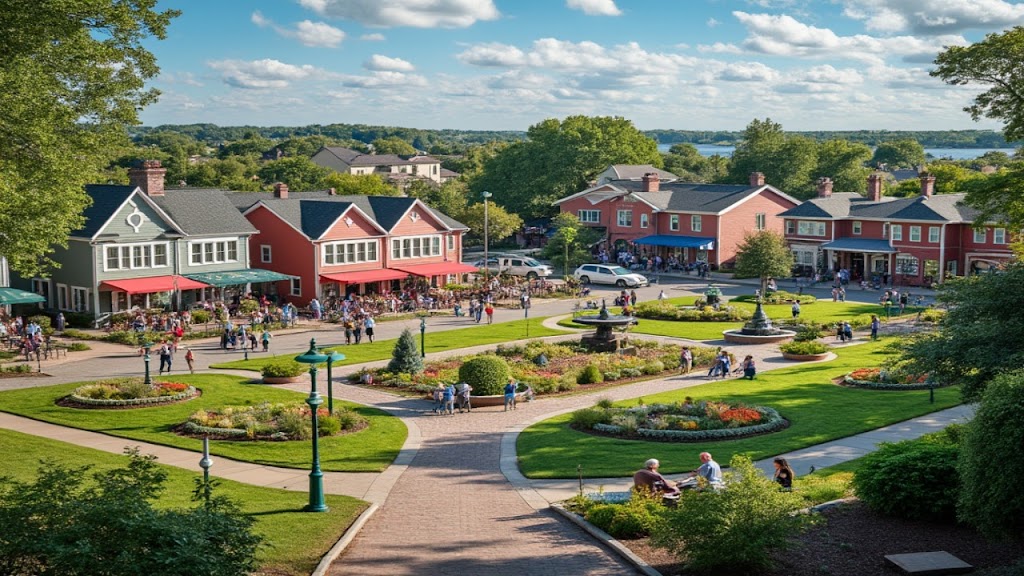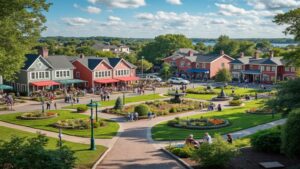Choosing the right community to live in is as crucial as finding the perfect home. Your surroundings can significantly impact your daily life, from convenience to social satisfaction. In this article, we’ll guide you through assessing whether a community aligns with your personal preferences and needs, ensuring you make an informed decision for a harmonious living experience.
Identifying Your Preferences
Lifestyle Preferences
When evaluating a community, start by considering your lifestyle preferences. Are you drawn to the vibrancy of urban life, the tranquility of suburban areas, or the peacefulness of rural settings? Each setting offers different benefits and challenges:
-
Urban Areas: These are bustling with activities, dining options, and cultural events. They offer high convenience with proximity to work and amenities but may come with higher noise levels and cost of living.
-
Suburban Areas: These communities strike a balance between urban and rural, offering a quieter environment with access to good schools and family-friendly activities.
-
Rural Areas: Ideal for those seeking solitude and natural beauty, rural communities offer expansive spaces and a slower pace of life but might lack immediate access to urban conveniences.
Family and Social Needs
Consider the needs of your family or social circle. If you have children or elderly family members, evaluate the community’s suitability:
-
Children: Look for nearby schools, playgrounds, and family-oriented activities. Safety and educational facilities should be top priorities.
-
Elderly Parents: Assess the availability of healthcare facilities, ease of access, and community support services.
-
Pets: Ensure there are pet-friendly parks and services if you have pets.
Work and Commute Requirements
Your commute plays a crucial role in your daily routine and overall satisfaction. Evaluate the community’s proximity to your workplace and transportation options:
-
Proximity to Work: A shorter commute can reduce stress and give you more time for personal activities.
-
Transportation Facilities: Check for availability of public transportation, bike lanes, and major roadways to facilitate easy travel.
Evaluating the Community Environment
Community Safety
Safety is a top priority when choosing a community. Research the crime rates and overall safety of the area. Look for:
- Crime Statistics: Check local crime reports and statistics for the neighborhood.
- Neighborhood Watch Programs: Programs and local police presence can enhance safety and provide peace of mind.
Local Amenities
Local amenities contribute to your daily convenience and quality of life. Assess the availability of:
- Essential Services: Look for nearby schools, hospitals, grocery stores, and other essential services.
- Recreational Facilities: Parks, gyms, and cultural centers enrich your leisure time and social interactions.
Community Vibe and Culture
The community vibe and culture can significantly impact your experience. Observe:
- Atmosphere: Visit the area to get a feel for its ambiance and resident interactions.
- Community Events: Participation in local events and activities can help you gauge the community’s engagement and friendliness.
Assessing Neighborhood Features
Property Values and Real Estate Trends
Understanding the property values and real estate trends can influence your decision:
- Current Property Values: Research the market value of properties in the area.
- Historical Trends: Look at past trends to gauge potential future changes in property values.
Noise Levels and Pollution
Evaluate the noise levels and environmental factors:
- Noise: Consider the proximity to major roads, railways, or airports that might affect noise levels.
- Pollution: Check for air quality and other environmental factors that could impact your health and comfort.
Maintenance and Upkeep
The condition of public spaces and local infrastructure reflects the community’s upkeep:
- Public Spaces: Observe the cleanliness and maintenance of parks and streets.
- Local Infrastructure: Assess the state of roads, lighting, and other public facilities.
Engaging with the Community
Attending Local Events
Participating in local events can provide insights into the community’s social fabric:
- Events: Attend community gatherings, fairs, or local markets to meet residents and experience the community spirit.
Talking to Current Residents
Talking to current residents offers valuable first-hand information:
- Opinions: Ask about their experiences, local challenges, and benefits of living in the area.
- Daily Life: Understand the daily living conditions and any potential issues.
Visiting at Different Times
Visit the community at various times of the day and week to observe:
- Day and Night: See how the community’s atmosphere changes and assess the activity levels and noise.
Making an Informed Decision
Weighing Pros and Cons
Create a pros and cons list based on your findings:
- Advantages: List the positive aspects of the community that align with your preferences.
- Disadvantages: Note any potential drawbacks or areas of concern.
Considering Future Growth
Research the community’s future growth and development plans:
- Development: Look into any planned developments or changes that might impact the community’s character and property values.
Practical Tips for Relocating
Preparing for a Move
Effective planning is essential for a smooth relocation:
- Moving Checklist: Prepare a checklist of tasks to manage your move efficiently.
- Transition: Ensure you have a plan for settling into your new community.
Settling In
Once moved, focus on integrating into your new community:
- Community Resources: Explore local services, join community groups, and attend neighborhood meetings to establish connections.
- Local Services: Familiarize yourself with local amenities and services to make your transition smoother.
Conclusion
Choosing the right community involves careful consideration of various factors, from lifestyle preferences to safety and amenities. By thoroughly assessing these aspects, you can ensure that your new community aligns with your personal needs and enhances your quality of life.
Take the time to evaluate all elements of a community to make an informed decision and enjoy a fulfilling living experience.

